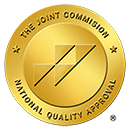What to Bring to the Emergency Room
Going to an emergency room isn’t usually planned, and even if it is, it can be an unsettling experience.
Having a complete package of documentation ready to just pick up as you head out the door will avoid delays while you try to get hold of the information you need.
Here are the items to bring to the Emergency Room
Whether you’re the patient or a relative, here’s what to take with (and what to leave at home) to help to make your visit easier:
#1: Insurance Details
Without these, you could waste precious seconds getting your loved one admitted. Your insurance information should include:
- A copy of the card (or the card itself, as some institutions might want to see the original)
- Phone numbers to contact if pre-authorization is needed for emergency procedures
- Supplemental plan information, such as Parts A and B if you’re on Medicare.
#2: Identification
Even if the insurance card carries a photo of the patient, most hospitals and freestanding emergency rooms require proof of identification. Include in your documentation package, a notarized photocopy of your passport or driver’s license, which can be compared with the details on the insurance.
#3: Medication Details
It’s vital for any medical team to have a complete list of the medications the patient is using. Drug interactions can be fatal, and if the patient is in shock or not fully functioning at the time of admission, critical details could be overlooked.
Include all prescription medications, over-the-counter and herbal remedies and even vitamins and nutrients that are used regularly. List the doses and times the medications are taken, too.
You don’t need to bring the actual medicines, because hospitals generally prefer to dispense their own and these are covered by insurance as part of the visit.
#4: List of Allergies
This item may be higher on the list if the patient has a potentially fatal allergy and requires interventions such as the use of an EpiPen. However, even minor allergies should be noted along with the triggers, the type of reaction to expect and the usual remedy used.
#5: Doctor’s Information and Medical Records
One of the first items the triage nurse will ask for during intake is the name and contact information of the patient’s regular physician. This includes any specialists that are currently treating him (or her), and if you have documentation for any official diagnoses given it will be helpful to have copies handy.
#6: Legal Documents
A visit to an ER usually only occurs during some sort of medical crisis, and it’s useful to have legal information close at hand in case you need it. Particularly in the case of senior patients, you might want to include a copy of any health care proxy agreements, Last Will and Testament and a Do Not Resuscitate (DNR) if one exists.
#7: Emergency Contact Information
Chances are good your loved one has a number of people who need to be told if he or she is hospitalized. The patient might not be in condition to think of all of them at the time of admission, so prepare a list in advance that contains the names, contact details and the relationship of those who need to be notified.
#8: Personal Effects
There’s nothing worse for a patient than waking up after a medical emergency unable to see, hear or communicate without his glasses, hearing aids or dentures if applicable. Make sure you know what to take with if a family member is rushed to the ER. This also includes any “security blanket” items such as a bible, a stuffed animal or a good luck charm. These items are particularly important for children, or seniors suffering from dementia.
#9: Clothing
For patients who are likely to be hospitalized, make sure you have the clothing they might need. This could include:
- A change of underwear
- Diapers for seniors or young children
- Extra socks for those who suffer with cold feet.
Leave all the non-essential items in the car until you need them, so you can focus on getting the patient checked in first.
Articles to Leave at Home
Some things are difficult to keep track of in an ER. Jewelry, laptops and other valuables run a high risk of being lost, and emergency room staff typically doesn’t take responsibility for ensuring their safekeeping. Children’s toys and electrical appliances such as hair dryers are generally unnecessary, and non-medicinal foods, sweets or other consumables should not be brought in. You can always go and pick them up later if you find the patient needs them and the medical team agrees to allow them.
If you’re taking the patient to the ER privately, call ahead to let them know you are coming. This enables them to have staff ready and waiting with the necessary equipment such as a wheelchair, stretcher or heart monitor.




